trioctylmethylammonium chloride
Modify Date: 2025-08-22 01:05:41
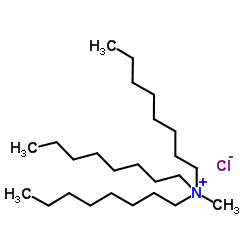
trioctylmethylammonium chloride structure
|
Common Name | trioctylmethylammonium chloride | ||
|---|---|---|---|---|
| CAS Number | 5137-55-3 | Molecular Weight | 404.156 | |
| Density | 0.884 g/mL at 25 °C(lit.) | Boiling Point | 240°C | |
| Molecular Formula | C25H54ClN | Melting Point | -20°C | |
| MSDS | N/A | Flash Point | >230 °F | |
| Name | methyltrioctylammonium chloride |
|---|---|
| Synonym | More Synonyms |
| Density | 0.884 g/mL at 25 °C(lit.) |
|---|---|
| Boiling Point | 240°C |
| Melting Point | -20°C |
| Molecular Formula | C25H54ClN |
| Molecular Weight | 404.156 |
| Flash Point | >230 °F |
| Exact Mass | 403.394470 |
| LogP | 5.51850 |
| Index of Refraction | n20/D 1.4665(lit.) |
| Stability | Stable. Incompatible wth strong oxidizing agents. Hygroscopic. |
Synonym:Methyltrioctylammonium chloride, Tricaprylylmethylammonium chloride; n-methyl-n,n-dioctyl-1-octanaminium chlorid Section 2 - COMPOSITION, INFORMATION ON INGREDIENTS
Risk Phrases: 22 36/38 41 Section 3 - HAZARDS IDENTIFICATION EMERGENCY OVERVIEW
Harmful if swallowed. Irritating to eyes and skin. Risk of serious damage to eyes.Hygroscopic (absorbs moisture from the air).Toxic. Potential Health Effects Eye: May result in corneal injury. Causes severe eye irritation and possible burns. Skin: May cause severe irritation and possible burns. Ingestion: Harmful if swallowed. May cause severe gastrointestinal tract irritation with nausea, vomiting and possible burns. Inhalation: May cause severe respiratory tract irritation and possible burns. Harmful if inhaled. Chronic: Prolonged or repeated skin contact may cause dermatitis. Section 4 - FIRST AID MEASURES Eyes: Get medical aid immediately. Do NOT allow victim to rub eyes or keep eyes closed. Extensive irrigation with water is required (at least 30 minutes). Skin: Get medical aid immediately. Immediately flush skin with plenty of water for at least 15 minutes while removing contaminated clothing and shoes. Wash clothing before reuse. Destroy contaminated shoes. Ingestion: Do not induce vomiting. If victim is conscious and alert, give 2-4 cupfuls of milk or water. Never give anything by mouth to an unconscious person. Get medical aid immediately. Wash mouth out with water. Inhalation: Get medical aid immediately. Remove from exposure and move to fresh air immediately. If breathing is difficult, give oxygen. Do NOT use mouth-to-mouth resuscitation. If breathing has ceased apply artificial respiration using oxygen and a suitable mechanical device such as a bag and a mask. Notes to Physician: Antidote: None reported. Section 5 - FIRE FIGHTING MEASURES General Information: As in any fire, wear a self-contained breathing apparatus in pressure-demand, MSHA/NIOSH (approved or equivalent), and full protective gear. During a fire, irritating and highly toxic gases may be generated by thermal decomposition or combustion. Will burn if involved in a fire. Vapors may be heavier than air. They can spread along the ground and collect in low or confined areas. Runoff from fire control or dilution water may cause pollution. This liquid floats on water and may travel to a source of ignition and spread fire. Extinguishing Media: Use water spray, dry chemical, carbon dioxide, or chemical foam. Section 6 - ACCIDENTAL RELEASE MEASURES General Information: Use proper personal protective equipment as indicated in Section 8. Spills/Leaks: Absorb spill with inert material (e.g. vermiculite, sand or earth), then place in suitable container. Avoid runoff into storm sewers and ditches which lead to waterways. Clean up spills immediately, observing precautions in the Protective Equipment section. Provide ventilation. Flush area with dilute (5%) acetic acid, and collect rinsate for disposal. Section 7 - HANDLING and STORAGE Handling: Wash thoroughly after handling. Do not get in eyes, on skin, or on clothing. Keep container tightly closed. Do not ingest or inhale. Use with adequate ventilation. Use only in a chemical fume hood. Discard contaminated shoes. Storage: Keep away from sources of ignition. Keep container closed when not in use. Store in a tightly closed container. Store in a cool, dry, well-ventilated area away from incompatible substances. Store protected from moisture. Section 8 - EXPOSURE CONTROLS, PERSONAL PROTECTION Engineering Controls: Facilities storing or utilizing this material should be equipped with an eyewash facility and a safety shower. Use adequate ventilation to keep airborne concentrations low. Exposure Limits CAS# 5137-55-3: CAS# 7732-18-5: CAS# 68603-15-6: Personal Protective Equipment Eyes: Wear appropriate protective eyeglasses or chemical safety goggles as described by OSHA's eye and face protection regulations in 29 CFR 1910.133 or European Standard EN166. Skin: Wear appropriate protective gloves to prevent skin exposure. Clothing: Wear appropriate protective clothing to prevent skin exposure. Respirators: Follow the OSHA respirator regulations found in 29 CFR 1910.134 or European Standard EN 149. Use a NIOSH/MSHA or European Standard EN 149 approved respirator if exposure limits are exceeded or if irritation or other symptoms are experienced. Section 9 - PHYSICAL AND CHEMICAL PROPERTIES Physical State: Liquid Color: viscous colorless to pale orange Odor: Not available. pH: Not available. Vapor Pressure: Not available. Viscosity: 1500 mPas 30 deg C Boiling Point: 225 deg C @ 760.00mm Hg Freezing/Melting Point: -20 deg C Autoignition Temperature: Not available. Flash Point: 132 deg C ( 269.60 deg F) Explosion Limits, lower: Not available. Explosion Limits, upper: Not available. Decomposition Temperature: Solubility in water: soluble in benzene, chloroform, isopropa Specific Gravity/Density: .8840g/cm3 Molecular Formula: C25H54ClN Molecular Weight: 404.15 Section 10 - STABILITY AND REACTIVITY Chemical Stability: Stable under normal temperatures and pressures. Conditions to Avoid: Incompatible materials, excess heat, exposure to moist air or water. Incompatibilities with Other Materials: Oxidizing agents. Hazardous Decomposition Products: Hydrogen chloride, nitrogen oxides, carbon monoxide, carbon dioxide. Hazardous Polymerization: Will not occur. Section 11 - TOXICOLOGICAL INFORMATION RTECS#: CAS# 5137-55-3: BR8575000 CAS# 7732-18-5: ZC0110000 CAS# 68603-15-6: AZ0878000 LD50/LC50: CAS# 5137-55-3: Draize test, rabbit, skin: 0.5 mL Severe; Oral, mouse: LD50 = 280 mg/kg; Oral, rat: LD50 = 223 mg/kg. CAS# 7732-18-5: Oral, rat: LD50 = >90 mL/kg. CAS# 68603-15-6. Carcinogenicity: Methyl tricaprylammonium chloride - Not listed by ACGIH, IARC, or NTP. Water - Not listed by ACGIH, IARC, or NTP. Alcohols, c6-12 - Not listed by ACGIH, IARC, or NTP. Other: See actual entry in RTECS for complete information. Section 12 - ECOLOGICAL INFORMATION Section 13 - DISPOSAL CONSIDERATIONS Dispose of in a manner consistent with federal, state, and local regulations. Section 14 - TRANSPORT INFORMATION IATA Shipping Name: TOXIC LIQUID, ORGANIC, N.O.S.* Hazard Class: 6.1 UN Number: 2810 Packing Group: III IMO Shipping Name: TOXIC LIQUID, ORGANIC, N.O.S. Hazard Class: 6.1 UN Number: 2810 Packing Group: III RID/ADR Shipping Name: TOXIC LIQUID, ORGANIC, N.O.S. Hazard Class: 6.1 UN Number: 2810 Packing group: III Section 15 - REGULATORY INFORMATION European/International Regulations European Labeling in Accordance with EC Directives Hazard Symbols: XN Risk Phrases: R 22 Harmful if swallowed. R 36/38 Irritating to eyes and skin. R 41 Risk of serious damage to eyes. Safety Phrases: S 26 In case of contact with eyes, rinse immediately with plenty of water and seek medical advice. S 37/39 Wear suitable gloves and eye/face protection. WGK (Water Danger/Protection) CAS# 5137-55-3: 2 CAS# 7732-18-5: No information available. CAS# 68603-15-6: 1 Canada CAS# 5137-55-3 is listed on Canada's DSL List. CAS# 7732-18-5 is listed on Canada's DSL List. CAS# 68603-15-6 is listed on Canada's DSL List. CAS# 5137-55-3 is not listed on Canada's Ingredient Disclosure List. CAS# 7732-18-5 is not listed on Canada's Ingredient Disclosure List. CAS# 68603-15-6 is not listed on Canada's Ingredient Disclosure List. US FEDERAL TSCA CAS# 5137-55-3 is listed on the TSCA inventory. CAS# 7732-18-5 is listed on the TSCA inventory. CAS# 68603-15-6 is listed on the TSCA inventory. SECTION 16 - ADDITIONAL INFORMATION N/A |
CHEMICAL IDENTIFICATION
HEALTH HAZARD DATAACUTE TOXICITY DATA
|
| Hazard Codes | Xn:Harmful |
|---|---|
| Risk Phrases | R22;R38;R41;R50/53 |
| Safety Phrases | S26-S39-S60-S61 |
| RIDADR | UN 2810 6.1/PG 3 |
| WGK Germany | 3 |
| RTECS | UZ2997500 |
| Packaging Group | III |
| Hazard Class | 6.1 |
| HS Code | 2827101000 |
|
~99% 
trioctylmethyla... CAS#:5137-55-3 |
| Literature: Paganelli, Stefano; Perosa, Alvise; Selva, Maurizio Advanced Synthesis and Catalysis, 2007 , vol. 349, # 11-12 p. 1858 - 1862 |
|
~% 
trioctylmethyla... CAS#:5137-55-3 |
| Literature: Dermeik, Salman; Sasson, Yoel Journal of Organic Chemistry, 1985 , vol. 50, # 6 p. 879 - 882 |
| Precursor 3 | |
|---|---|
| DownStream 10 | |
| HS Code | 2923900090 |
|---|---|
| Summary | 2923900090 other quaternary ammonium salts and hydroxides。Supervision conditions:None。VAT:17.0%。Tax rebate rate:9.0%。MFN tariff:6.5%。General tariff:30.0% |
| 1-Octanaminium, N-methyl-N,N-dioctyl-, chloride (1:1) |
| CAPRIQUAT |
| N-Methyl-N,N-dioctyloctan-1-aminium chloride |
| tri-n-octylmethylammonium chloride |
| ALIQUAT 336 |
| Methyl trioctyl ammonium chloride |
| tricaprylylmethylammonium chloride |
| ALIQUAT(TM) 336 |
| MFCD00011862 |
| methyltri(n-octyl)ammonium chloride |
| TOMAC |
| N-Methyl-N,N-dioctyl-1-octanaminium chloride |
| aliquat |
| Aliquat.(R). 336 |
| Aliquat(rg 336 |
| Trioctyl methyl ammonium chloride |
| ADOGEN 464 |
| Methyltri-n-octylaMMoniuM Chloride |
| methyltri-C8,10-ammonium chloride |
| EINECS 225-896-2 |
| trioctylmethylammonium chloride |
| Methyltrioctylammonium chloride |
| Aliquat 336N |
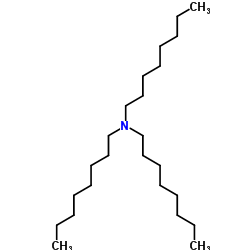
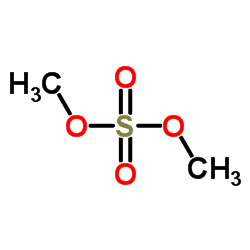
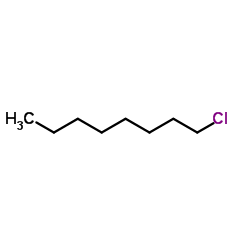


 CAS#:350-30-1
CAS#:350-30-1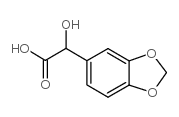 CAS#:27738-46-1
CAS#:27738-46-1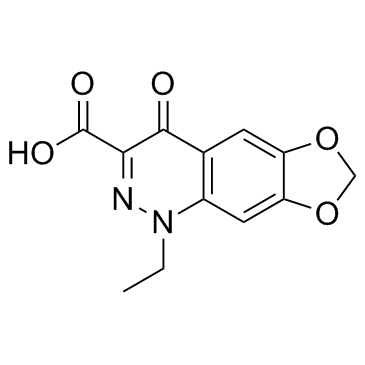 CAS#:28657-80-9
CAS#:28657-80-9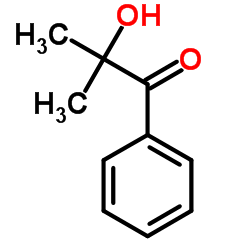 CAS#:7473-98-5
CAS#:7473-98-5 CAS#:5466-77-3
CAS#:5466-77-3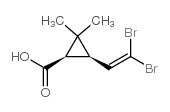 CAS#:53179-78-5
CAS#:53179-78-5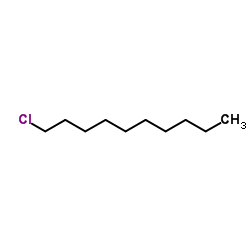 CAS#:1002-69-3
CAS#:1002-69-3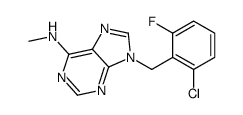 CAS#:70091-21-3
CAS#:70091-21-3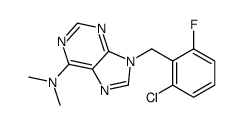 CAS#:70091-23-5
CAS#:70091-23-5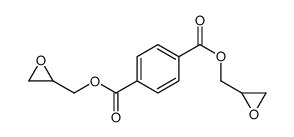 CAS#:7195-44-0
CAS#:7195-44-0
